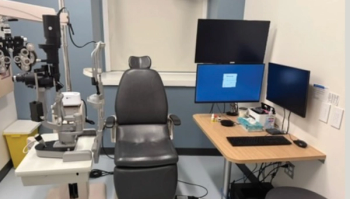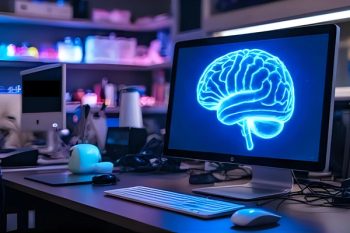
Preservative-free tafluprost/timolol lowers IOP well, glaucoma study shows
A fixed-dose tafluprost and timolol combination eye drop led to significant reductions in intraocular pressure (IOP) in patients with open-angle glaucoma (OAG) and ocular hypertension (OHT) in a safety and efficacy study, demonstrating its benefit in patients intolerant to, or insufficiently controlled on, prostaglandin analogue (PGA) monotherapy or topical beta-receptor blockers.
A fixed-dose tafluprost and timolol combination eye drop led to significant reductions in intraocular pressure (IOP) in patients with open-angle glaucoma (OAG) and ocular hypertension (OHT) in a safety and efficacy study, demonstrating its benefit in patients intolerant to, or insufficiently controlled on, prostaglandin analogue (PGA) monotherapy or topical beta-receptor blockers.
“The severity of most clinical signs and subjective symptoms decreased significantly compared to that on the previous treatment, and in general the [drug] was well tolerated,” reported Francesco Oddone and colleagues at Istituto di Ricovero e Cura a Carattere Scientifico (IRCSS) Fondazione Bietti, Rome, Italy. They published the findings of Santen’s Visionary study in Advances in Therapy.
When attempting to reduce IOP in glaucoma patients, clinicians typically begin treatment with PGA monotherapy and then move to combination therapy if monotherapy does not achieve the target IOP reduction. However, preservatives such as benzalkonium chloride (BAK) used in many topical glaucoma therapies have been shown to worsen ocular surface disease (OSD), with preservative-induced OSD manifesting in 45-60% of chronically treated glaucomatous eyes.
Because of the dangers of patients developing this disease, researchers have been experimenting with preservative-free topical treatments for glaucoma, such as the fixed combination of tafluprost (0.0015%) and timolol (0.5%). The eye drops are marketed under the trade name Taptiqom in Europe (Loyada in Italy).Visionary study
The randomised, controlled, real-world Phase IV trial, Visionary, enrolled 713 patients (577 of whom completed the study) and monitored patient outcomes over a 6-month period. Patients were all adults suffering from OAG or OHT who had medically recorded insufficient IOP reduction with, or poor tolerance for, beta-receptor blocker or PGA monotherapy.
Study participants also had to have been evaluated by an investigator ophthalmologist and determined to be likely to benefit from a preservative-free drops formulation. Researchers did not include patients in the study if they had had ophthalmologic surgery in the previous 6 months; had previously been treated with PF tafluprost/timolol FC treatment; were pregnant or breastfeeding at the screening visit; or had any contraindication against tafluprost or timolol treatment.
Patients were instructed to treat their glaucomatous eyes with one drop of the preservative-free combination daily and their IOP was measured using Goldmann applanation tonometry at week 4, week 12 and month 6. In addition to IOP data, researchers asked patients to evaluate subjective symptoms such as dry eye feeling, irritation, itching, foreign body sensation and eye pain at each visit using a four-grade scale (none, mild, moderate and severe). They evaluated ocular signs at month 6 and compared them with the baseline measures in all participants.
The absolute mean IOP change at month 6 was statistically significant (p < 0.0001). Mean (SD) IOP reduction from baseline was 5.7 (4.11) mmHg, which represents an overall IOP reduction of 24.9%. 40% of study participants reported IOP reduction of 30% or greater.
Of the 577 participants included in the analysis, 81.3% had changed to preservative-free tafluprost/timolol treatment due to uncontrolled IOP, while 18.4% were enrolled due to low ocular tolerance on the previous topical IOP-lowering medication (regardless of the success of the IOP control).
At month 6, the average IOP reduction from baseline was 26.6% for participants who had experienced poor IOP control when using previous treatments, while those patients who had switched to preservative-free tafluprost/timolol treatment due to low tolerance of previous treatments enjoyed a mean IOP reduction of 19.6% (p < 0.001).
Researchers observed a mean corneal fluorescein staining (CFS) score reduction from baseline at month 6 in 32.7% of patients, while 53.6% showed no change, and CFS increased in 13.6% of the patients.
A proportion of patients (17%) stopped using PF tafluprost/timolol FC treatment during the study period. Of these 98 patients, two had poor IOP reduction; 12 had poor local tolerance; four dropped out due to poor compliance; and 13 stopped for “other reasons.” Data is unavailable for the 67 other patients.Safety
Ninety-nine (17.2%) of the 577 patients involved in the safety analysis reported 129 adverse effects during the 6-month study period, although only 69 (53.5%) were considered to be treatment-related. Only one of the adverse events was considered serious (status asthmaticus) while 93% were mild to moderate in severity. Of the adverse events, 71.3% had resolved or were resolving at the point of data cut-off.
The researchers said they were encouraged by the results of their study, but cautioned that more research is needed in paediatric populations, as well as those of non-European origin and those patients suffering from angle-closure glaucoma.
Newsletter
Get the essential updates shaping the future of pharma manufacturing and compliance—subscribe today to Pharmaceutical Technology and never miss a breakthrough.












































